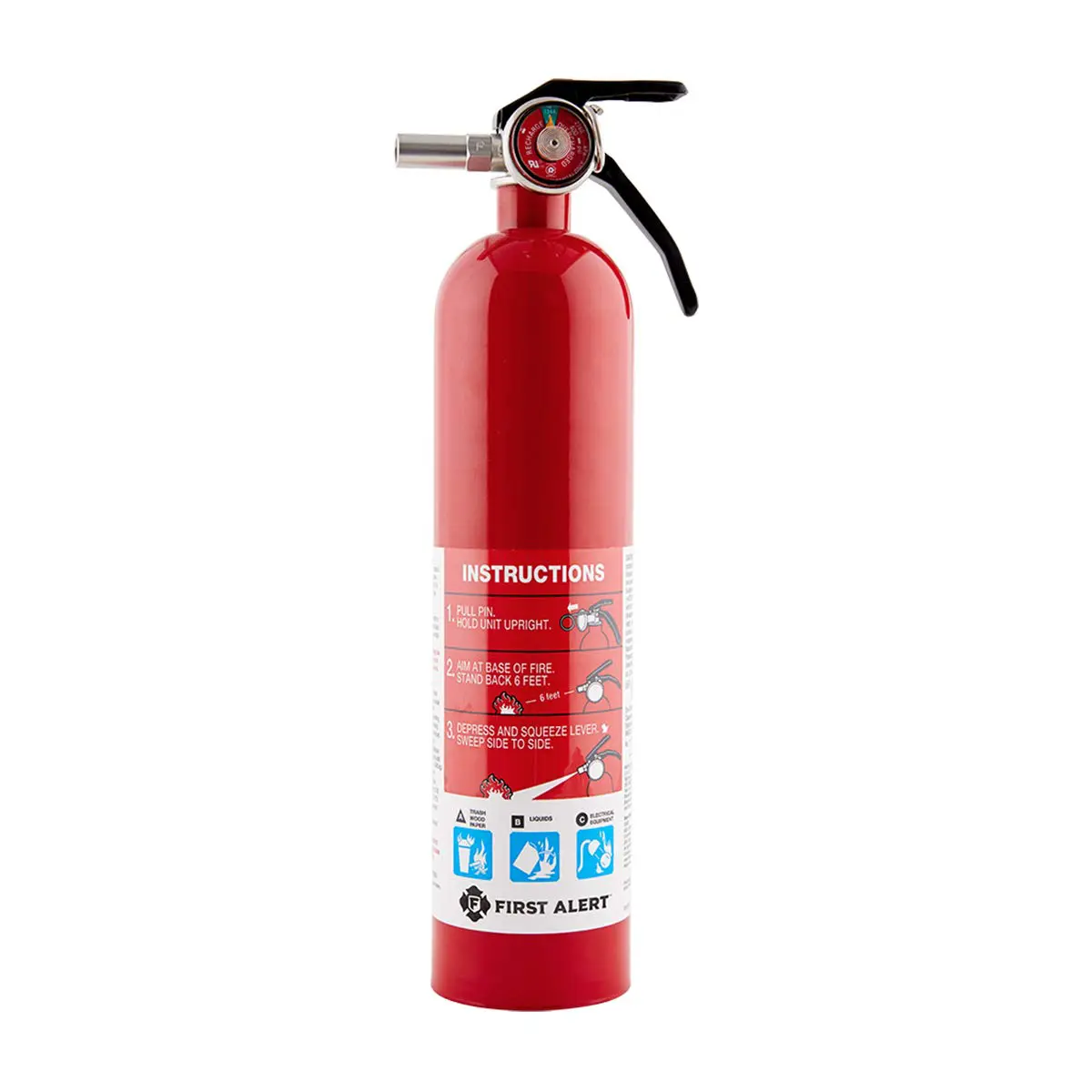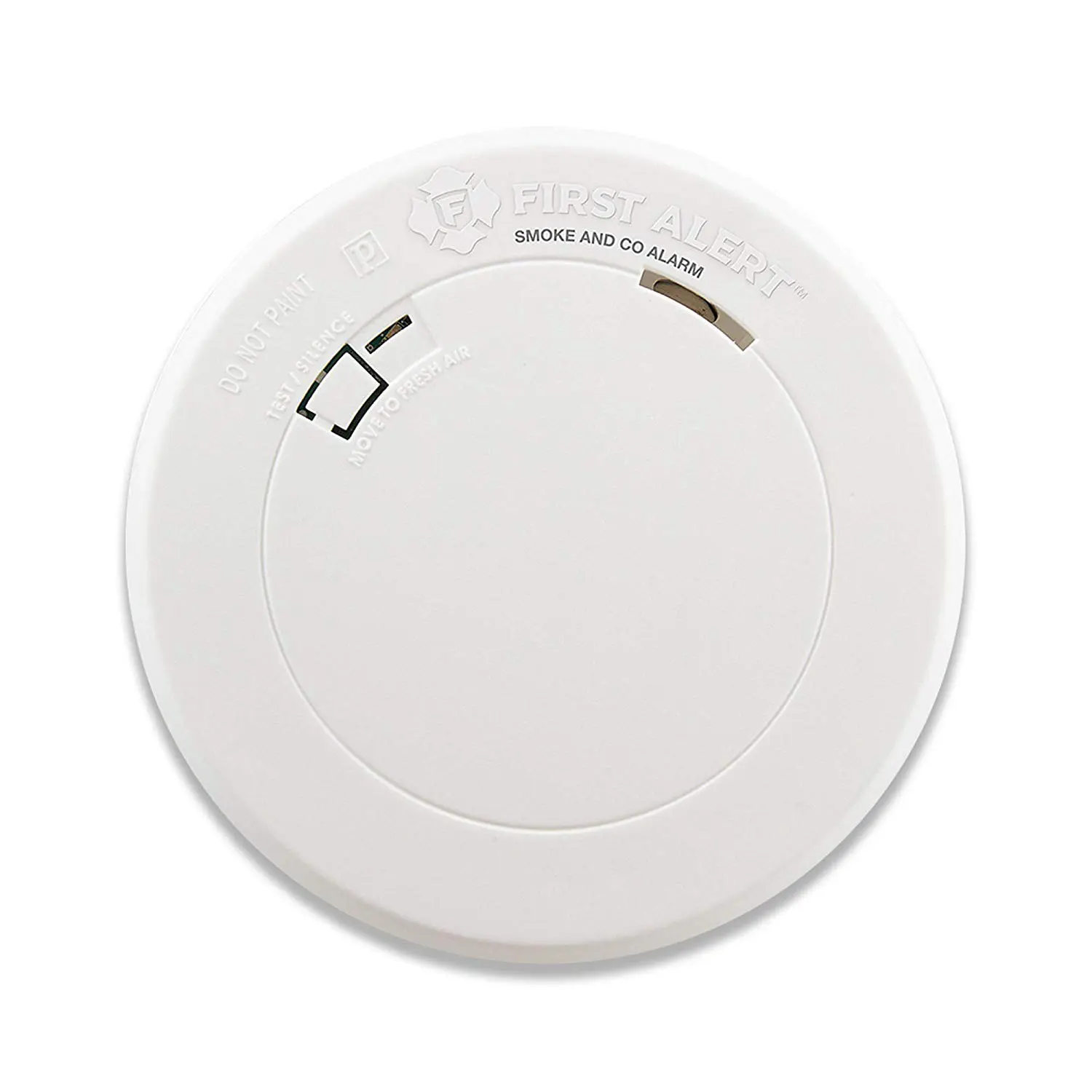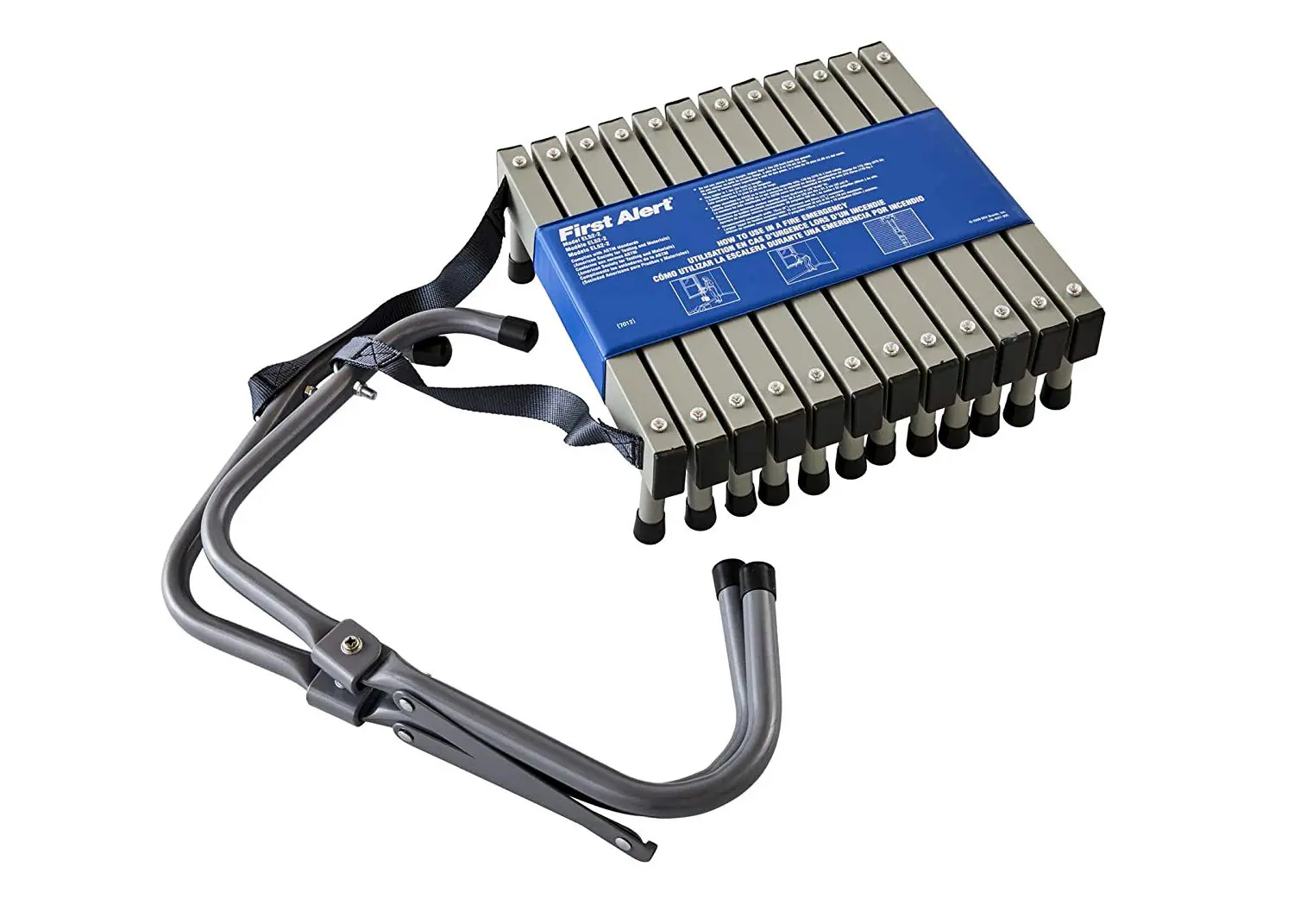Thank you First Alert for sponsoring this post.
What is it about moving into a new home or having kids that makes you want to prep for any and all emergencies? Since moving into our home and having the twins, I’ve become a bit of a safety fanatic. We already had a few smoke alarms installed, but when I started baby proofing the house, I began doing a lot of research and I want our home protected and safe for my family. So today, I’m sharing all of the Fire Preparation & Safety Tips for the Home that I’ve learned in order to hopefully inspire you to ensure that your home is prepared in case of a fire emergency.

Smoke and Carbon Monoxide Alarms
First things first: smoke alarms! Did you know that 3 of every 5 home fire deaths resulted from fires in homes with no working smoke alarms? (Source: National Fire Protection Association.) Also, Carbon Monoxide, an invisible, odorless, and deadly gas that can be produced by any fuel-burning device, is also known as the “silent killer” and is the number one cause of accidental deaths in the US resulting in an average of 450 deaths and over 20,000 emergency room visits each year. (Source: National Fire Protection Association.) Combination smoke and carbon monoxide alarms can provide early warning in the event of an emergency at home. You should install First Alert 10-Year Combination Smoke & Carbon Monoxide Alarms on every level and in every bedroom, as well as in the hallway, near the stairs, in the living room, and don’t forget about the basement.
Did you know all states have legislation requiring smoke alarms? It’s the law! States like New York and New Jersey have legislation that just went or will go into effect that requires 10-year sealed battery alarms. California has had a 10-year sealed battery alarm requirement since 2014! You can click here to check the requirements in your state.

I didn’t know about the 10-year sealed battery law. We had a First Alert smoke alarm with a replaceable battery and a separate First Alert carbon monoxide alarm installed inside the twins’ nursery, but in all of the prep of renovating, moving into the house, and having the twins, I didn’t know how old the alarms were, so I decided to just replace the two different alarms with one First Alert 10-Year Combination Smoke & Carbon Monoxide Alarm. (You can also get a 10-Year Combination Smoke & Carbon Monoxide Alarm with Voice Alerts.) The benefits of a 10-year alarm include no costly battery replacements for the life of the alarm, no more climbing up the ladder to change batteries, and perhaps best of all, no late night low-battery chirps. Seriously though, why do they always seem to chirp only in the middle of the night?


But, the alarms don’t last forever, so remember to replace your alarms at least every ten years and test smoke and carbon monoxide alarms regularly! I’ve decided to replace all of the alarms in the house with First Alert 10-Year Combination Smoke & Carbon Monoxide Alarms and will remember to replace them all again in 2029.
Fire Extinguishers
Next, make sure you have a fire extinguisher on every level including in the kitchen. Unattended cooking is the leading cause of fires in the kitchen, so remember to stay alert while cooking.
I was asked why we installed our fire extinguisher in such a prominent location and not hidden around the corner or inside the pantry, but honestly, I want everyone to see the extinguisher and know where it is when they’re in my kitchen. It’s not pretty, but I don’t want it to blend in or be hidden. Between us, our parents, our friends, and, in the future, possible babysitters, or nannies, other kids, etc., I want everyone to know exactly where the fire extinguisher is in case they need to use it.
 Don’t forget to also have a fire extinguisher on every level (don’t forget the basement!) plus one in the kitchen and garage.
Don’t forget to also have a fire extinguisher on every level (don’t forget the basement!) plus one in the kitchen and garage.
Escape Ladder
If you have a second floor, get an escape ladder in case of an emergency. And then after you get it, open it up and read the instructions and make sure it will work with your window and location and that you know how to use it.
I realize it’s one of those things that you’ll only be grateful that you have it when need to use it, but you’ll honestly be more grateful to never have to use it and just let it sit and collect dust under the bed. 

Clean Your Dryer Ducts Annually
Have you ever seen the aftermath of a dryer fire? One of my best friends had a dryer fire at her house and it wasn’t until I saw the damage afterwards that I understood just how bad it could have been. They luckily put the fire out pretty quickly, but the smoke damage was extreme and much of her house needed to be remodeled.
Maybe it’s because I saw the damage caused by my friend’s dryer fire, but I now make sure to get our dryer exhaust vent pipe cleaned out every 6 months by a dryer lint removal service. The leading cause of a dryer fire is failure to clean, so I have a 2-man crew come in with a huge blower and a brush attached to a drill and they unhook the dryer vent and use the drill/brush to clean and then blow all of the excess lint out of the vent pipe. There’s always a lot of lint and I’m somehow always shocked because I clean the lint trap out every single time! But lint still collects in the tubing and the vent, so I make sure to get someone out here to clean it every 6 months.
You can also do it yourself with this Dryer Vent Cleaning Brush. It costs less than $20 and has excellent reviews!

Plus, we also have a fire extinguisher easily accessible and in plain view upstairs near the washer and dryer in case of a fire. Just like in the kitchen, having the fire extinguisher mounted onto the wall right there isn’t pretty or styled, but I don’t care because it’s right there in case we ever need to use it.
Here are a few more Dryer Fire Prevention Tips:
- Do not use the dryer without a lint filter.
- Make sure you clean the lint filter before or after each load of laundry. Remove lint that has collected around the drum.
- Rigid or flexible metal venting material should be used to sustain proper air flow and drying time.
- Make sure the air exhaust vent pipe is not restricted and the outdoor vent flap will open when the dryer is operating. Once a year, or more often if you notice that it is taking longer than normal for your clothes to dry, clean lint out of the vent pipe or have a dryer lint removal service do it for you.
- Keep dryers in good working order. Gas dryers should be inspected by a qualified professional to make sure that the gas line and connection are intact and free of leaks.
- Make sure the right plug and outlet are used and that the machine is connected properly.
- Follow the manufacturer’s operating instructions and don’t overload your dryer.
- Turn the dryer off if you leave home or when you go to bed.
Family Emergency Plan
And last, but not least, you should have a family emergency plan. Be sure to both plan and practice an escape route with your family. The National Fire Protection Association has a couple of great free planning tools on their website including a safety tips sheet and a downloadable escape grid. Obviously, my babies are too young to go over an emergency plan right now, but as soon as they get to an age where they understand we will go over emergency prep and safety with them.

Fire Preparation & Safety Tips for the Home
Instructions
1. Install Smoke and Carbon Monoxide Alarms
Preferably ones with 10 year, sealed batteries.
2. Fire Extinguishers
Make sure you have a fire extinguisher on every level (and in the kitchen and garage) and know how to use it.
3. Get an Escape Ladder
After you get it, open it up and read the instructions and make sure it will work with your window and location and that you know how to use it.
4. Clean out Dryer Ducts Regularly
The leading cause of a dryer fire is failure to clean. I have my dryer duct cleaned out every 6 months because we do a LOT of laundry and the washer/dryer is located upstairs near our bedrooms.
5. Have a Family Emergency Plan
Be sure to both plan and practice an escape route with your family.
Recommended Products
This post contains affiliate links. If you click on an affiliate link and make a purchase, I receive a small commission at NO additional cost to you. It just means I made it easier for you to find something, so I earn a few a few cents from the sale. I appreciate your support of Salty Canary. Thank you!



